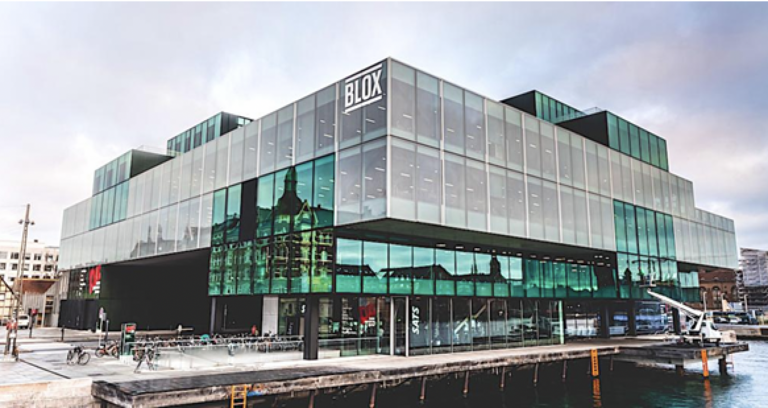How will you be working in 2020?

A technological revolution is currently taking place which could fundamentally change the way we live and work. The future of work will see many disruptive changes, with automation, robotics, wearable technologies, augmented reality and Artificial Intelligence all radically reshaping the professional landscape. Going to work in a driverless car, sharing a working space with a robot and ordering coffee via a virtual assistant just in time for your arrival. Does this future seem far away? What if this future becomes a reality already in 2020?
How will you be working in 2020?
It’s Monday morning, and you’ve just stepped into a driverless car with three colleagues to chair your first meeting of the day. You enter the office by placing your hand on a biometric scan, and, sensing your feelings as you start the working week, the lights and temperature are adjusted to improve your mood. Your virtual assistant orders you a coffee, which is brought to your desk by a co-bot working alongside you. This may sound like a sci-fi film, but these innovations could be coming to your workplace sooner than you think… Here, I explore the key technologies set to reshape the professional landscape by 2020, making the workplace of the future much more virtual, mobile, collaborative and flexible.
Driverless cars paving the way for the mobile office
Gartner predicts that 21 million new cars will be equipped with data connectivity this year alone. This could bring us one step closer to the possibility of holding physical meetings with colleagues on the way to work, while the car takes charge of the driving. Before the mobile office becomes a reality however, standards and regulations must be put in place to ensure the safety of autonomous cars. The core capabilities for driverless vehicles centre around 3D mapping data, sensor technologies, and algorithms for path planning, and further progress must be made here before they become mainstream.
Wearables improving business performance and enhancing productivity
Wearables will continue to improve business performance by enabling employees to be more efficient and productive at work. For instance, we can use smart bracelets for access management in healthcare, hospitality and manufacturing; intelligent clothing to measure our heart rate and blood pressure; and mood sensors to sense our moods and adjust the environment to help us destress, be more creative and increase productivity. With these devices set to lead the wearables market in the next few years, there will be much focus on how they can enhance our day-to-day working life. Elon Musk is already exploring this concept, recently announcing his vision for neural lace – a computer system that would add a digital layer of intelligence to our brain… watch this space!
Co-bots – working alongside robots in the office
While robotic systems have already automated many routine and low-skill roles, such as supermarket cashiers, baristas and call centre personnel, they are starting to take on more collaborative roles. A recent study by MIT found that teams made up of humans and robots working together can be more productive than teams made up of either humans or robots. For example, humans and robots safely work alongside one another in SEW-Eurodrive’s factory in Baden-Württemberg. With robotic arms taking on many of the repetitive, automated tasks, the factory workers are free to focus on creative thinking, leading to more innovative end-products.
Augmented Reality blurring the lines between physical and digital
Developments in AR will enrich our daily activities in new, interactive ways, through the enhancement of our perception of reality. For instance, mechanics could wear smart glasses to see instructions tagged on equipment when repairing, leaving their hands free to make the repair. In hospitals, surgeons could see ultrasound scans of organs while performing surgery on patients. Such developments are set to grow the AR market substantially, which is set to generate $120bn by 2020.
Virtual Assistants taking our orders
Machine learning and artificial intelligence are giving rise to new virtual assistants, which could enhance our productivity by setting automatic reminders and ordering goods on demand. Services such as Siri, Cortana and now Amazon’s Alexa, are leading the charge; with Forrester estimating that 6m Amazon Echo devices were sold by the end of 2016. Starbucks is one company that has started to embrace this trend, recently unveiling a new feature in its mobile app that lets customers order and pay for their order simply by speaking to a virtual assistant.
Flexible working contracts and UBI
The growth of the internet economy, and access to collaboration tools, has irreversibly changed the way employees operate. We are seeing a rise in the gig economy, with greater numbers of temporary and contract workers being employed. This is particularly apparent in the US, where 50% of the workforce are set to be freelancers by 2020. With careers becoming more temporal, there are implications for worker rights and how individuals are rewarded – one idea that is currently being explored is creating a universal basic income, which could radically transform the welfare state.
The Green Office
The ‘new’ green is, in addition to encouraging a low carbon footprint, a physically green office. Plants have proven to increase happiness and productivity. Inspired by nature, new offices will be green, use natural and artificial light to create moods and enhance creativity, encouraging staff to de-stress.
For further information see our vision for the Future of Work in Journey 2020 or register to receive the monthly Atos Dialogue.
Author: Marianne Hewlett
Marianne Hewlett is a Senior Vice President at Atos and a seasoned marketeer and communications expert. Passionate about connecting people, technology and business, she is a member of the Atos Scientific Community where she explores the Future of Work and the impact of technology on individuals, organizations and society. She is a strong ambassador for diversity and inclusivity – and particularly encourages female talent to pursue a career in IT – as she believes a diverse and happy workforce is a key driver for business success. As an ambassador for the company’s global transformation program Wellbeing@work, she explores new technologies and ways of working that address the needs of current and future generations of employees. A storyteller at heart, she writes about the human side of business and technology and posts include insights into the future of work, the science of happiness, and how wellbeing and diversity can drive success.




